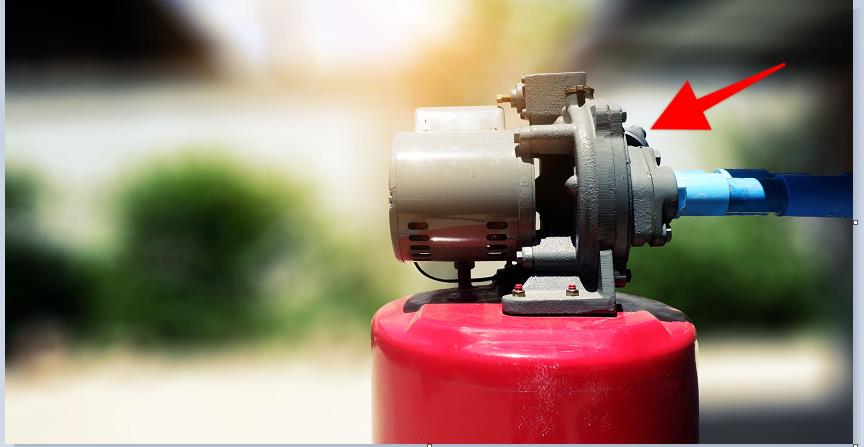Power outages are a part of life, especially if you’re relying on self-sustainable energy. While not life-threatening, if the power’s out for a significant period, it can cause your well pump to malfunction, leaving you without water.
Even once the power’s been restored, you could find your well pump still struggling to operate. To get it back up and running, you need to check both the circuit breaker and the pressure switch. If these are functioning correctly, then priming your pump should resolve the problem.
As you’ll know from installing your shallow well pump, this system needs water to create suction, but if you’ve been using water during a power outage, the pressure can drop to such an extent that air can enter the system. An airlock can cause fluctuations in pressure and inhibit the siphon power of your system.
Priming your pump means filling it with clean water to remove any airlocks or debris that are preventing the pump from operating correctly and is a straightforward process regardless of whether you’ve got a convertible jet pump or a centrifugal model.
Even so-called self-priming pumps may need a manual prime after a power outage. If the water level is too low, the self-priming process can’t occur, and your pump will need a little TLC to get it back up to speed.
Finding the Best Source of Priming Water
The first challenge you face is obtaining water to prime your pump, given that your well pump is not currently delivering water to your household system. You need the cleanest water you can find as any dirt or debris could damage the pump.
One option is to take water from your toilet tank, assuming that it’s still full and the water is clean.
Alternatively, you could drain a couple of gallons of water from your hot water tank, although this may contain some rust or other debris. In an emergency, you could use water from a stream or dam, but again, you need to take care to ensure it’s as clean as possible.
You could use a simple survival water filter to remove particulate and ensure a safe priming process.
How To Prime A Jet Well Pump

This common type of pump is one of the easiest to prime. All you have to do is follow these simple steps:
- Turn off the power supply to your well pump before you start the priming process. This will stop the pump from activating automatically once the pressure is restored.
- Open one faucet in your how to release any residual water pressure from the system and then close it again. If you skip this step, when you open the priming port on your pump, you could get an unexpected shower!
- Most jet pumps follow a standard design, and you’ll usually find the priming plug situated on top of the pump mechanism. Depending on the make, the priming plug is usually a hexagonal or square metal threaded plug that you unscrew with a combination or adjustable wrench. (see image above)
- Once you’ve removed the plug, you can fill the priming port with water. Approximately two gallons is sufficient for most types of jet pumps, and you can use a funnel to make the process easier and prevent water from spilling onto sensitive parts of the pump, like the pressure gauge.
- Continue to fill the priming port until it starts to overflow, then replace, and tighten the priming plug. If you want to make sure your system is operating on optimal suction, add a turn or two of PTFE thread-sealing tape to the plug before you replace it.
- Restore the electrical supply to your pump, keeping an eye on the water pressure gauge that should start to climb steadily. The noise from the pump should also shift from the raspy gasp of a dry mechanism to the muffled sound of a system filled with water.
- If the pressure doesn’t increase or the pump continues to make that raspy noise, repeat the priming process. A pump often needs two or more consecutive primings before the water level rises in the system sufficiently for it to generate enough suction to operate.
- Once normal water pressure is restored, open a faucet and let the water flow for a few minutes. This action will flush out any impurities, bacteria, or other nasties that may have entered the system during the priming process. You can collect this water and store it close to your pump, so you’ve got a convenient supply of priming water ready for next time.
The Best Way To Prime A Centrifugal Well Pump
Submersible pumps are self-priming, and, as they’re submerged in water, air can’t enter these systems.
Although some centrifugal pumps are self-priming, if air has entered the system, the self-priming process won’t operate, meaning you’ll have to prime the pump manually.
To do this, follow these three steps:
- Open the priming port on top of the pump and fill it with water
- Slowly open the suction isolation valve and the air vents on both the suction and discharge pipes
- Wait for the pumped water to flow out of the vents, and then close both the air vents and suction isolation valve.
If the process of priming manually is just too daunting for you, you could install a second self-priming pump to do it for you while simultaneously acting as a pressure booster for your well pump.
Some pumps come with an ejector kit that primes the pump by using compressed air to create a vacuum in the suction line.
Although priming a well pump is necessary, excessive priming can cause problems. Priming a centrifugal pump for more than 10 minutes, for example, can cause the liquid in the pump to vaporize before the priming process is complete. This can damage the pump, leading to yet more inconvenience and expense.
Conclusion
Priming a pump is a simple process and one that can quickly restore your well pump to normal operation after a power outage.
You can avoid the need for priming after a power outage by turning off your water supply as soon as the power fails, that way you can maintain a higher water level in the system, and prevent air from entering the pipes.
If all else fails make sure you have a quality well hand pump installed as a backup.


